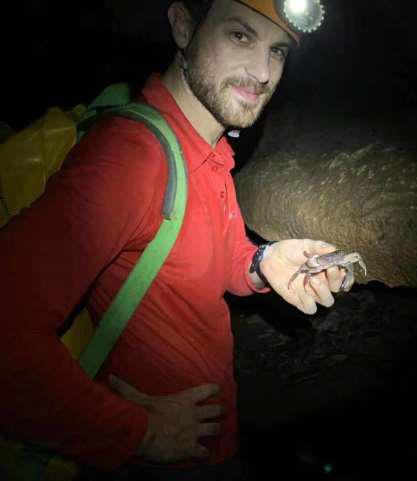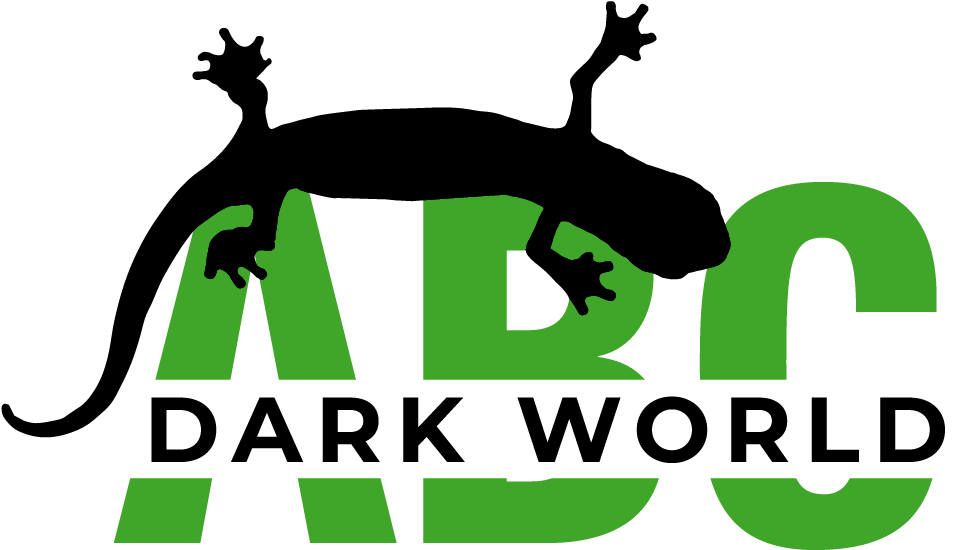Publication List
Dr. Enrico Lunghi, Ph.D.
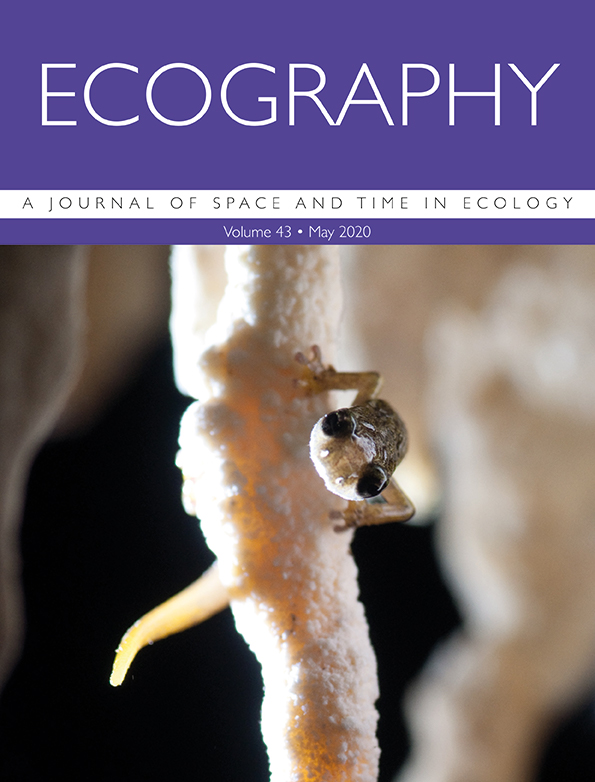
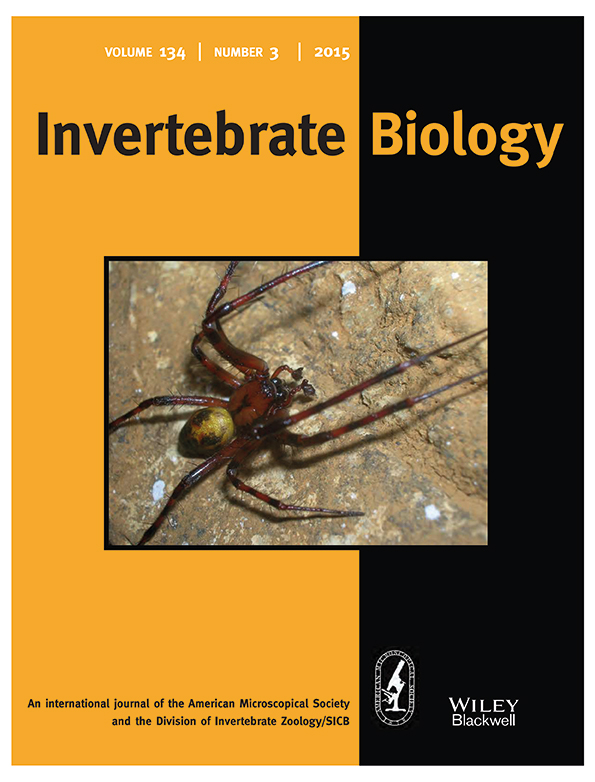
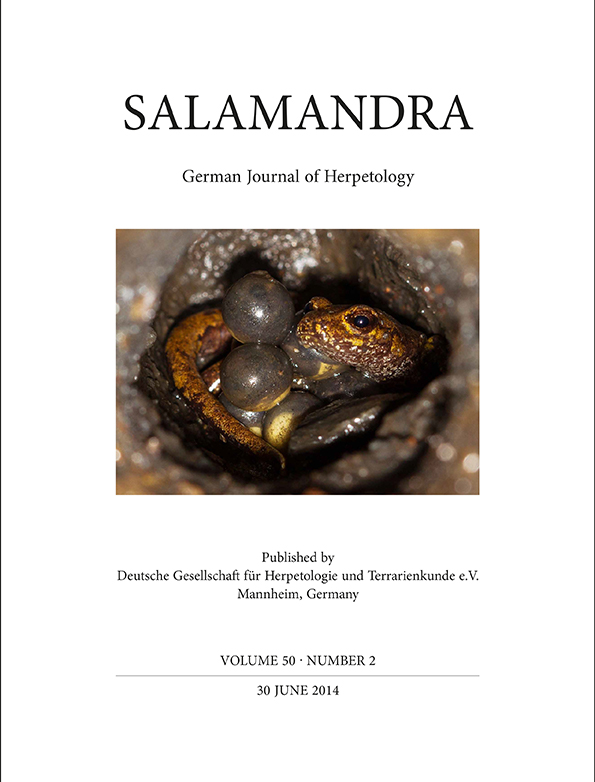
Scientific papers
- Iannella M., Cerasoli F., Lunghi E., Console G., Biondi M. Sillero N. (2024). Climate change effects on the only Western Palearctic plethodontids: Range changes and possible depletion of intraspecific genetic diversity. Journal of Biogeography
- Canessa S., Biancolini D., Iannella M., Bernabò I., Salvi D., Vignoli L., Lunghi E., Costa A., Razzetti E., Ficetola G.F., Romano A. (2024): Uncertain future and uncertain projections: assessing extinction risks in European salamanders from projected chytrid fungus invasion using IUCN Criterion E. Acta Herpetologica 19: 155-159.
- Ficetola G. F., Manenti R., Barzaghi B., Romagnoli S., Lo Parrino E., Melotto A., Marta S., Giachello S., Balestra V., Lana E., Maiorano L., Pennati R., Lunghi E., Falaschi M. (2024). Integrating historical and recent data to measure long-term trends of endangered subterranean species. Biological Conservation 296: 110695
- Coppari L., Di Gregorio M., Corti C., Merilli S., Mulargia M., Cogoni R., Manenti R., Ficetola G. F., Lunghi E. (2024). Four years monitoring of the endangered European plethodontid salamanders. Scientific Data 11: 706
- Cianferoni F., Di Gregorio M., Corti C., Lunghi E. (2024). Variability of Seasonal Trophic Niche in Two Sympatric Salamanders: Italian Cave Salamanders and Fire Salamanders. Herpetologica 80: 97-105.
- Coppari L., Manenti R., Lunghi E. (2024). Microclimatic Influences on the abundance of three non-troglobiont species. Diversity 16: 186.
- Mammola S., Graco-Roza C., Ballarin F., Hesselberg T., Isaia M., Lunghi E., Mouron S., Pavlek M., Tolve M., Cardoso P. (2024). Functional convergence underground? The scale-dependency of community assembly processes in European cave spiders. Global Ecology and Biogeography: e13840.
- Lunghi E., Ficetola G. F., Manenti R., Mancinelli G. (2024). Yearly variation in individual diet specialization: Evidence fromcave salamanders. Global Ecology and Conservation 51: e02864.
- Lunghi E. and Bilandzija H. (2024). Telomere length and dynamics in Astyanax mexicanus cave and surface morphs. Peerj 12: e16957.
- Lunghi E., Niemiller M. L.,Bilandzija H. (2024). Editorial: Adaptations to subterranean environments. Frontiers in Ecology & Evolution 11: 1354954.
- Saccò M., Mammola S., Altermatt F., Alther R., Bolpagni R., Brancelj A., Brankovits D., Fišer C., Gerovasileiou V., Griebler C., Guareschi S., Hose G. C., Korbel K., Lictevout E., Malard F., Martínez A., Niemiller M. L., Robertson A., Tanalgo K. C., Bichuette M. E., Borko Š., Brad T., Campbell M. A., Cardoso P., Celico F., Cooper S. J. B., Culver D., Di Lorenzo T., Galassi D. M. P., Guzik M. T., Hartland A., Humphreys W. F., Ferreira R. L., Lunghi E., Nizzoli D., Perina G., Raghavan R., Richards Z., Reboleira A. S. P. S., Rohde M. M., Fernández D. S., Schmidt S. I., van der Heyde M., Weaver L., White N. E., Zagmajster M., Hogg I., Ruhi A., Gagnon M. M., Allentoft M. E., Reinecke R. (2024). Groundwater is a hidden global keystone ecosystem. Global Change Biology 30: e17066.
- Casali S., Pagliarani M., Cofani M., Cianferoni F., Lunghi E. (2023). First data on the consumed prey by Speleomantes italicus from the Republic of San Marino. Acta Herpetologica 18(2): 159-163.
- Costa A, Lunghi E, Rosa G, Salvidio S. (2023) Recent advances in the behavioral ecology of European plethodontid salamanders. Animals 13:3667.
- Lunghi, E., Mammola S., Martínez A., Hesselberg T. (2023). Behavioural adjustments enable the colonization of subterranean environments. Zoological Journal of the Linnean Society: zlad133.
- Cianferoni, F., Lunghi E. (2023). Inferring on Speleomantes foraging behavior from gut contents examination. Animals 13: 2782.
- Cogoni R., Di Gregorio M., Cianferoni F., Lunghi E. (2023). Monitoring of the endangered cave salamander Speleomantes sarrabusensis. Animals 13:391
- Corti C., Biaggini M., Nulchis V., Cogoni R., Cossu I.M., Frau S., Mulargia M., Lunghi E., Bassu L. (2022). Species diversity and distribution of amphibians and reptiles in Sardinia, Italy. Acta Herpetologica 17:125-133.
- Lunghi E., Cianferoni F., Corti C., Zhao Y., Manenti R., Ficetola G. F., Mancinelli G. (2022). The trophic niche of subterranean populations of Speleomantes italicus: a multi-temporal analysis. Scientific Reports 12: 18257.
- Lunghi, E., Corti, C., Biaggini, M., Zhao, Y., Cianferoni, F., 2022. The trophic niche of two sympatric species of salamanders (Plethodontidae and Salamandridae) from Italy. Animals 12, 2221.
- Bacci F, Lunghi E. (2022) The Golden jackal on Tuscan Apennine. Natural History Science Atti della Società Italiana di Scienze Naturali e del Museo Civico di Storia Naturale di Milano 9: 59-62.
- Mammola S., Pavlek M., Huber B. A., Isaia M., Ballarin F., Tolve M., Čupić I., Hesselberg T., Lunghi E., Mouron S., Graco-Roza C., Cardoso P. (2022) A trait database and updated checklist for European subterranean spiders. Scientific Data 9: 236.
- Nanni V., Mammola S., Macías-Hernández N., Castrogiovanni A., Salgado A. L., Lunghi E., Ficetola G. F., Modica C., Alba R., Spiriti M., Holtze S., Munhoz de Mello É., De Mori B., Biasetti P., Chamberlain D., Manenti R. (2022). Global response of conservationists across mass media likely constrained bat persecution due to COVID-19. Biological Conservation 272: 109591 .
- Lunghi E, Bilandžija H. (2022) Longevity in cave animals. Frontiers in Ecology and Evolution 10: 874123.
- Lunghi E, Valle B, Guerrieri A, Bonin A, Cianferoni F, Manenti R, Ficetola G F (2022). Complex patterns of environmental DNA transfers from surface to subterranean soils revealed by analyses of cave insects and springtails. Science of the Total Environment 826: 154022.
- Lunghi E., Corti C., Biaggini M., Merilli S., Manenti R., Zhao Y., Ficetola G. F., Cianferoni F. (2022). Capture-mark-recapture data on the strictly protected Speleomantes italicus. Ecology: e3641.
- Lunghi E., Manenti R., Cimmaruta, R. (2022). The identity of an allochthonous Pyrenean population of Speleomantes cave salamanders. Salamandra 58: 67-70.
- Lunghi E. (2022). Doubling the lifespan of European plethodontid salamanders. Ecology 103: e03581.
- Lunghi E., Corti C. (2021). Predation of European cave salamanders (Speleomantes) by the spider Meta bourneti. Spixiana 44: 54.
- Lunghi E. (2021). Rana italica (Italian stream frog). Herpetological Review 52: 380.
- Bates A. E., Primack R. B., …, Lunghi E., …, Duarte C. M. (2021). Global COVID-19 lockdown highlights humans as both threats and custodians of the environment. Biological Conservation 263: 109175.
- Lunghi E., Bacci F., Zhao Y. (2021). How can we record reliable information on animal colouration in the wild? Diversity 13:356.
- Manenti R., Piazza B., Zhao Y., Padoa Schioppa E., Lunghi E. (2021). Conservation studies on groundwaters’ pollution: challenges and perspectives for stygofauna communities. Sustainability 13:7030.
- Lunghi E., Cianferoni F., Merilli S., Zhao Y., Manenti R., Ficetola G. F., Corti C. (2021). Ecological observations on hybrid populations of European plethodontid salamanders, genus Speleomantes. Diversity 13:285.
- Mammola S., Lunghi E., Bilandzija H., Cardoso P., Grimm V., Schmidt S. I., Hesselberg T., Martínez A. (2021). Collecting eco-evolutionary data in the dark: Impediments to subterranean research and how to overcome them. Ecology and Evolution.
- Lunghi E., Cianferoni F., Giachello S., Zhao Y., Manenti R., Corti C., Ficetola G. F. (2021). Updating photos and stomach contents datasets for two mainland Speleomantes salamanders: data from summer 2020. Scientific Data 8: 150.
- Mammola S., Hesselberg T., Lunghi E. (2020). A trade-off between latitude and elevation contributes to explain range segregation of broadly distributed cave-dwelling spiders. Journal of Zoological Systematics and Evolutionary Research 59: 370-375.
- Lunghi E., Giachello S., Manenti R., Zhao Y., Corti C., Ficetola G. F., Bradley J. G. (2020). The post hoc measurement as a safe and reliable method to age and size plethodontid salamanders. Ecology and Evolution 10(20): 11111-11116.
- Lunghi E. (2020). Occurrence of the Black lace-weaver spider, Amaurobius ferox, in caves. Acta Carsologica 49: 119-124
- Manenti R., Melotto A., Guillaume O., Ficetola, G. F., Lunghi E. (2020). Switching from mesopredator to apex predator: how do responses vary in amphibians adapted to cave living? Behavioral Ecology and Sociobiology 74: 126.
- Lunghi E., Ficetola G. F., Zhao Y., Manenti R. (2020). Are the neglected Tipuloidea crane flies (Diptera) an important component for subterranean environments? Diversity 12: 333.
- Lunghi E., Zhao Y. (2020). Do Chinese cavefish show intraspecific variability in morphological traits? Ecology and Evolution 10(14): 7723-7730.
- Lunghi E., Manenti R., Cianferoni F., Ceccolini F., Veith M., Corti C., Ficetola G. F., Mancinelli G. (2020). Inter-specific and inter-population variation in individual diet specialization: do environmental factors have a role? Ecology 101(8): e03088.
- Lunghi E., Giachello S., Zhao Y., Corti C., Ficetola G. F., Manenti R. (2020). Photographic database of the European cave salamanders, genus Hydromantes. Scientific Data 7: 171.
- Lunghi E., Cianferoni F., Ceccolini F., Zhao Y., Manenti R, Corti C., Ficetola G. F., Mancinelli G. (2020). Same diet, different strategies: variability of individual feeding habits across three populations of Ambrosi’s cave salamander (Hydromantes ambrosii). Diversity 12: 180.
- Schultze N., Spitzweg, C., Corti C., Delaugerre M., Di Nicola M. R., Geniez P., Lapini L., Liuzzi C., Lunghi E., Novarini N., Picariello O., Razzetti E., Sperone E., Stellati L., Vignoli L., Asztalos M., Kindler C., Vamberger M., Fritz U. (2020). Mitochondrial ghost lineages blur phylogeography and taxonomy of Natrix helvetica and natrix in Italy and Corsica. Zoologica Scripta 49(4): 395-411.
- Manenti R., Lunghi E., Barzaghi B., Melotto A., Falaschi M., Ficetola G. F. (2020). Do salamanders limit the abundance of groundwater invertebrates in subterranean habitats? Diversity 12: 161.
- Ficetola G. F., Lunghi E., Manenti R. (2020). Microhabitat analyses support relationships between niche breadth and range size when spatial autocorrelation is strong. Ecography 43: 1-11.
- Lunghi E., Corti C., Mulargia M., Zhao Y., Manenti R., Ficetola G. F., Veith M. (2020). Cave morphology, microclimate and abundance of five cave predators from the Monte Albo (Sardinia, Italy). Biodiversity Data Journal 8: e48623.
- Lunghi E., Giachello S., Mulargia M., Dore P. P., Cogoni R., Corti C. (2019). Variability in the dorsal pattern of the Sardinian grass snake (Natrix natrix cetti) with notes on its ecology. Acta Herpetologica 14(2): 141-145.
- Lunghi E., Zhao Y., Sun X., Zhao Y. (2019). Morphometrics of eight Chinese cavefish species. Scientific Data 6: 233.
- Lunghi E., Romeo D., Mulargia M., Cogoni R., Manenti R., Corti C., Ficetola G. F., Veith M. (2019). On the stability of the dorsal pattern of European cave salamanders (genus Hydromantes). Herpetozoa 32: 249-253.
- Ficetola G. F, Lunghi E., Cimmaruta R., Manenti R. (2019). Transgressive niche across a salamander hybrid zone revealed by microhabitat analyses. Journal of Biogeography 46(7): 1342-1354.
- Lunghi E. (2018). Ecology and life history of Meta bourneti (Araneae: Tetragnathidae) from Monte Albo (Sardinia, Italy). PeerJ 6: e6049.
- Lunghi E., Bruni, G. (2018). Long-term reliability of Visual Implant Elastomers in the Italian cave salamander (Hydromantes italicus). Salamandra 54(4): 283-286.
- Lunghi E., Cianferoni F., Ceccolini F., Veith M., Manenti R., Mancinelli G., Corti C., Ficetola G. F. (2018). What shapes the trophic niche of European plethodontid salamanders? PLOS One 13(10): e0205672.
- Lunghi E., Mascia C., Mulargia M., Corti C. (2018). Is the Sardinian grass snake (Natrix natrix cetti) an active hunter in underground environments? Spixiana 41(1): 160.
- Mulargia M., Corti C., Lunghi E. (2018). The herpetofauna of the Monte Albo, Sardinia (Italy). Russian Journal of Herpetology 25(3): 172-176.
- Manenti R., Barzaghi B., Lana E., Stocchino G. A., Manconi R., Lunghi E. (2018). The stenoendemic cave-dwelling planarians (Platyhelminthes, Tricladida) of the Italian Alps and Apennines: conservation issues. Journal of Nature Conservation 45: 90-97.
- Ficetola G. F., Lunghi, E., Canedoli C., Padoa-Schioppa E., Pennati R., Manenti R. (2018). Differences between microhabitat and broad-scale patterns of niche evolution in terrestrial salamanders. Scientific Reports 8: 10575.
- Ficetola, G. F., Barzaghi B., Melotto A., Muraro M., Lunghi E., Canedoli C., Lo Parrino E., Nanni V., Silva-Rocha I., Urso A., Carretero M. A., Salvi D., Scali S., Scarì G., Pennati R., Andreone F., Manenti R. (2018). N-mixture models reliably estimate the abundance of small vertebrates. Scientific Reports 8: 10357.
- Lunghi, E., Manenti, R., Mulargia, M., Veith, M., Corti, C., Ficetola, G.F. (2018). Environmental suitability models predict population density, performance and body condition for microendemic salamanders. Scientific Reports 8: 7527.
- Lunghi E., Cianferoni F., Ceccolini F., Mulargia M., Cogoni R., Barzaghi B., Cornago L., Avitabile D., Veith M., Manenti R., Ficetola G. F., Corti C. (2018). Field-recorded data on the diet of six species of European Hydromantes cave salamanders. Scientific Data 5: 180083.
- Lunghi E., Corti C., Manenti R., Barzaghi B., Buschettu S., Canedoli C., Cogoni R., De Falco G., Fais F., Manca A., Mirimin V., Mulargia M., Mulas C., Muraro M., Murgia R., Veith M., Ficetola G. F. (2018). Comparative reproductive biology of European cave salamanders (genus Hydromantes): nesting selection and multiple annual breeding. Salamandra 54(2): 101-108.
- Lunghi E., Bruni G., Ficetola G. F., Manenti R. (2018). Is the Italian stream frog (Rana italica Dubois, 1987) an opportunistic exploiter of cave twilight zone? Subterranean Biology 25: 49-60.
- Lunghi E., Ficetola G. F., Mulargia M., Cogoni R., Veith M., Corti C., Manenti R. (2018). Batracobdella leeches, environmental features and Hydromantes International Journal for Parasitology: Parasites and Wildlife 7: 48.53.
- Lunghi E., Guillaume O., Blaimont P., Manenti R. (2018). The first ecological study on the oldest allochthonous population of European cave salamanders (Hydromantes). Amphibia-Reptilia 39(1): 113-119.
- Manenti R., Lunghi E., Ficetola G. F. (2017). Cave exploitation by an usual epigean species: a review on the current knowledge on fire salamander breeding in caves. Biogeographia 32: 32-46.
- Lunghi E., Veith M. (2017). Are Visual Implant Alpha tags adequate to individually mark European cave salamanders (genus Hydromantes)? Salamandra 53(4): 541-544.
- Lunghi E., Ficetola G. F., Barzaghi B., Vitillo C., Mulargia M., Manenti R. (2017). Melanism in European plethodontid salamande Spixiana 40(1): 157-160.
- Lunghi E., Manenti R., Ficetola G. F. (2017). Cave features, seasonality and subterranean distribution of non-obligate cave dwellers. PeerJ 5:
- Lunghi E., Monti A., Binda A., Piazzi I., Salvadori M., Cogoni R., Riefolo L. A., Biancardi C., Mezzadri S., Avitabile D., Ficetola G. F., Mulargia M., Manca S., Blaimont P., Di Cerbo A. R., Manenti R. (2017). Cases of albinism and leucism in amphibians in Italy: new reports. Natural History Sciences Atti della Società Italiana di Scienze Naturali e del Museo Civico di Storia Naturale di Milano 4(1): 73-80.
- Lunghi E., Deschandol F., Cornago L., Cogoni R. (2016). Dark coloration in Sardinian Grass Snake (Natrix natrix cetti). Herpetological Bulletin 137: 28-29.
- Lunghi E., Manenti R., Canciani G., Scarì G., Pennati R., Ficetola G. F. (2016). Thermal equilibrium and temperature differences among body regions in European plethodontid salamanders. Journal of Thermal Biology 60: 79-85.
- Manenti R., Lunghi E., Canedoli C., Bonaccorsi M., Ficetola G. F. (2016). Parasitism of the leech, Batracobdella algira (Moquin-Tandon, 1846), on Sardinian cave salamanders (genus Hydromantes) (Caudata: plethodontidae). Herpetozoa 29 (1/2): 27-35.
- Lunghi E., Mulargia M., Mulargia M. (2016). Evidence of malformation in The European cave salamanders, Hydromantes flavus. Herpetological Bulletin 135: 34-35.
- Lunghi E., Corti C., Cencetti T. (2015). Oophagy in the Smooth snake (Coronella austriaca). Herpetological Bulletin 134: 35-36.
- Lunghi E., Murgia R., De Falco G., Buschettu S., Mulas C., Mulargia M., Canedoli C., Manenti R., Ficetola G. F. (2015). First data on nesting ecology and behaviour in the Imperial cave salamander Hydromantes imperialis. North-Western Journal of Zoology 11(2): 324-330.
- Lunghi E., Manenti R., Ficetola G. F. (2015). Seasonal variation in microhabitat of salamanders: environmental variation or shift of habitat selection? PeerJ 3: e1122.
- Manenti R., Lunghi E., Ficetola G. F. (2015). Distribution of spiders in cave twilight zone depends on microclimatic features and trophic supply. Invertebrate Biology 134(3): 242-251.
- Lunghi E., Manenti R., Manca S., Mulargia M., Pennati R., Ficetola G. F. (2014). Nesting of cave salamanders (Hydromantes flavus and italicus) in natural environments. Salamandra, 50(2): 105-109.
- Lunghi E., Manenti R., Ficetola G. F. (2014). Do cave features affect underground habitat exploitation by non-troglobite species? Acta Oecologica 55: 29-35.
Editorials, Comments and Letters
- Di Lorenzo T., Lunghi E., …, Mammola S. (2024). EU needs groundwater ecosystems guidelines. Science 386: 1103-1103.
- Lunghi E., Manenti R. (2020). Cave communities: from the surface border to the deep darkness. Diversity 12: 167.
- Lunghi E., Corti C., Manenti R., Ficetola G. F. (2019). Consider species specialism when publishing datasets. Nature Ecology & Evolution 3: 319.
Conference contributions
- Coppari L., Lunghi E. (2024). Seasonal activity of the Monte Albo cave salamander Speleomantes flavus. 10th World Congress of Herpetology, Kuching (Borneo), 5–9 August.
- Lunghi E., Corti C., Manenti R., Ficetola G. F. (2024). Are Speleomantes Social Species? A Test with italicus. 10th World Congress of Herpetology, Kuching (Borneo), 5–9 August.
- Lunghi E., Cayuela H. (2024). Growth rate and survival in the genus Speleomantes. 10th World Congress of Herpetology, Kuching (Borneo), 5–9 August.
- Sperone E., Barca D., Giglio G., Leonetti F. L., Coppari L., Salvi D., Lunghi E. (2024). Are Facultative Cave Species Drivers of Metal Contaminants into Subterranean Environments? Presentation of the PRIN Project “METALCAVE”. 10th World Congress of Herpetology, Kuching (Borneo), 5–9 August.
- Marzocca S., Lunghi E., Cianferoni F., Zuffi, M. A. L., Di Gregorio M. (2024). Cosa si mangia in città: studi preliminari sulla dieta di Lissotriton vulgaris meridionalis (Boulenger, 1882) e Triturus carnifex (Laurenti, 1768) in aree urbane. XV Congresso della Societas Herpetologica Italica, Perugia (Italy), 17-21 September.
- Lunghi E., Manenti R., Ficetola G. F., Mancinelli G., Corti C., Cianferoni F., Giglio G., Leonetti F. L., Sperone E., Coppari L. (2024). The amphibians’ trophic niche project. XV Congresso della Societas Herpetologica Italica, Perugia (Italy), 17-21 September.
- Farda B., Coppari L., Lunghi E., Pellegrini M. (2024). Development of a sampling and preservation protocol for cutaneous bacterial communities of Speleomantes. XV Congresso della Societas Herpetologica Italica, Perugia (Italy), 17-21 September.
- Farda B., Coppari L., Lunghi E., Cacchio P., Pellegrini M. (2024). Exploring cultivable stress-tolerant bacteria in the skin of Speleomantes italicus. 26th International Conference on Subterranean Biology and 6th International Symposium on Anchialine Ecosystems, Cagliari (Italy), 9-14 September: 26
- Zagmajster M., Balázs G., Biró A., Bucur R., Collard O., Delić T., Fišer C., Flot J.-F., Haidau C., Herczeg G., Iepure S., Kos A., Lippert S., Lunghi E., Mantoiu Ş., Moldovan O., Sambor O., Sitar C., Stoch F., Zakšek V., Weber D., Weigand H., Weigand A. (2024). Sub-BioMon – Developing and testing approaches to monitor subterranean biodiversity in karst. 26th International Conference on Subterranean Biology and 6th International Symposium on Anchialine Ecosystems, Cagliari (Italy), 9-14 September: 33.
- Sperone E., Barca D., Giglio G., Leonetti F. L., Salvi D., Coppari L., Lunghi E. (2024). Preliminary data on the presence of trace elements in cave water and soil. 26th International Conference on Subterranean Biology and 6th International Symposium on Anchialine Ecosystems, Cagliari (Italy), 9-14 September: 54.
- Cialente E., Oetken B., Coppari L., Lunghi E. (2024). Is tail fat accumulation higher in hypogean vs epigean populations of Speleomantes? 26th International Conference on Subterranean Biology and 6th International Symposium on Anchialine Ecosystems, Cagliari (Italy), 9-14 September: 57.
- Martínez A., David D.C., Cancellario T., …, Lunghi E., …, Fontaneto D. (2024). Stygofauna Mundi: a comprehensive global biodiversity database of groundwater related habitats across marine and freshwater realms? 26th International Conference on Subterranean Biology and 6th International Symposium on Anchialine Ecosystems, Cagliari (Italy), 9-14 September: 69.
- Coppari L., Lunghi E. (2024). Activity and abundance on subterranean population of Monte Albo cave salamander (Speleomantes flavus). 26th International Conference on Subterranean Biology and 6th International Symposium on Anchialine Ecosystems, Cagliari (Italy), 9-14 September: 112.
- Ficetola G. F., Lunghi E., …, Manenti R. (2023). Long-term trends of cave salamanders (Speleomantes strinatii) in Liguria and Piedmont. 1st Congresso Nazionale “Biologia e Conservazione degli Urodeli“, 26-27 Ottobre Chiavari (GE), Italy.
- Coppari L., Lunghi E. (2023). Observed malformations on three Italian plethodontid species. 1st Congresso Nazionale “Biologia e Conservazione degli Urodeli“, 26-27 Ottobre Chiavari (GE), Italy.
- Cianferoni F., Di Gregorio M., Corti C., Lunghi E. (2023). Variability of seasonal trophic niche in two sympatric salamanders, the Italian cave salamander and the Fire salamander. 1st Congresso Nazionale “Biologia e Conservazione degli Urodeli“, 26-27 Ottobre Chiavari (GE), Italy.
- Casali S., Pagliarani M., Cofani M., Cianferoni F., Lunghi E. (2023). Preliminary data on the diet of a population of Speleomantes italicus from the Republic of San Marino. 1st Congresso Nazionale “Biologia e Conservazione degli Urodeli“, 26-27 Ottobre Chiavari (GE), Italy.
- Lunghi E. (2023). Preliminary data on growth rate and lifespan of the genus Speleomantes. 8th Conference on the Biology of Plethodontid Salamanders, 25-27 May Hammond, Louisiana.
- Manenti R., Ficetola G. F., Lunghi E. (2023). Current perspectives in the study of European plethodontids. 8th Conference on the Biology of Plethodontid Salamanders, 25-27 May Hammond, Louisiana.
- O’Donnell M. K., Lunghi E., Deban S. (2023). Foot size, contact area, and cling performance in Speleomantes of Italy and Sardinia. 8th Conference on the Biology of Plethodontid Salamanders, 25-27 May Hammond, Louisiana.
- Cogoni R., Mulargia M., Manca S., Croubu V., Giachello S., Lunghi E. (2022). New observations on the tree-dwelling behaviour of European cave salamanders (genus Speleomantes). XIV Congresso Nazionale della Societas Herpetologica Italica, Torino, Italia, , 13-17 September.
- Di Gregorio M., Lunghi E. (2022). Trophic niche of an epigean population of Speleomantes sarrabusensis. 21st European Congress of Herpetoogy, Belgrade – Serbia, 5-9 September.
- Lunghi E., Cianferoni F., Biaggini M., Corti C. (2022). The diet of two sympatric salamanders, the Fire salamander and the Italian cave salamander. 21st European Congress of Herpetoogy, Belgrade – Serbia, 5-9 September.
- Lunghi E. (2022). Preliminary data on the seasonal growth rate of the Italian cave salamander Speleomantes italicus. 21st European Congress of Herpetoogy, Belgrade – Serbia, 5-9 September.
- Lunghi E., Bilandžija H. (2022). The use of subterranean species as models in senescence studies. Congress of the European Society for Evolutionary Biology, Prague – Czech Republic, 14-19 August.
- Lunghi E., Mammola S., Martinez A., Hesselberg T. (2022). Convergent behaviours in subterranean species. Proceedings of the 25th International Conference on Subterranean Biology, Cluj-Napoca – Romania, 18-22 July. ARPHA Conference Abstracts.
- Lunghi E., Bilandžija H. (2022). Average telomere length in cave vs surface Astyanax mexicanus. Proceedings of the 25th International Conference on Subterranean Biology, Cluj-Napoca – Romania, 18-22 July. ARPHA Conference Abstracts
- Lunghi E., Melotto A., Guillaume O., Ficetola G. F., Manenti R. (2022). Predator recognition is not a major problem in Proteus anguinus. 4th SOS Proteus “Conservation of Proteus and its habitat facing climate change challenger”, Trieste – Italy, 21-22 May.
- Lunghi E., Biaggini M., Corti C. (2021). Reliability of the post-hoc measurement on Salamandra salamandra. XIII Congresso Nazionale Societas Herpetologica Italica, Lipari (Messina) 22-26 settembre 2021: 91.
- Lunghi E., Biaggini M., Corti C. (2021). Implementing the use of digital images in studies on lizards. XI International Symposium on Mediterranean Lacertid Lizards, 27-28 September: 12.
- Lunghi E., Cianferoni F., Ceccolini F., Manenti R., Veith M., Corti C., Ficetola G. F., Mancinelli G. (2019). Can the eltonian niche be predicted? A test with sardinian cave Salamanders. XX European Congress of Herpetoogy, Milano 2-6 September: 76.
- Giachello S., Lunghi E. (2019). How to analyse coloration in amphibians and reptiles? XX European Congress of Herpetoogy, Milano 2-6 September: 125.
- Ficetola G. F., Lunghi E., Canedoli C., Barzaghi B., Muraro M., Giachello S., Cimmaruta R., Manenti R. (2018). Microhabitat analyses across a hybrid zone show transgressive niche in introgressed cave salamanders. XII Congresso della Societas Herpetologica Italica, Rende (Cosenza) 1-5 October (Riassunti): 69-71.
- Lunghi E., Cianferoni F., Ceccolini F., Veith M., Manenti M., Ficetola G. F., Corti C. (2018). Updating the information related prey consumed by European cave salamanders. XII Congresso della Societas Herpetologica Italica, Rende (Cosenza) 1-5 October (Riassunti): 74-76.
- Lunghi E., Sisino L., Mulargia M., Manenti R., Ficetola G. F. (2018). Censimento dei siti ipogei frequentati dai pletodontidi europei: cinque anni di segnalazioni. XII Congresso della Societas Herpetologica Italica, Rende (Cosenza) 1-5 October.
- Lunghi E., Mulargia M., Dore P.P., Cogoni R., Corti C. (2018). Preliminary observations on the dorsal pattern variability in the Sardinian grass snake (Natrix natrix cetti). XII Congresso della Societas Herpetologica Italica, Rende (Cosenza) 1-5 October: 85-91.
- Lunghi E., Manenti R., Mulargia M., Veith M., Corti C., Ficetola G. F. (2018). Which processes are behind the relationship between species abundance and environmental suitability? Monte Albo cave salamander as model species. 24th International Conference on Subterranean Biology, Aveiro 19-24 August 2018. ARPHA Conference Abstracts
- Manenti R., Barzaghi B., Lana E., Stocchino G. A., Manconi R., Lunghi E. (2018). Preliminary conservation status assessment of cave-dwelling planarians (Platyhelminthes, Tricladida) of Italian Alps and Apennines. 24th International Conference on Subterranean Biology, Aveiro 19-24 August 2018. ARPHA Conference Abstracts 1: e29515.
- Manenti R., Lunghi E., Canedoli C., Pennati R., Scarì G., Cimmaruta R., Ficetola, G. F. (2017). Integrating micro-scale analyses in the study of niche similarity: preliminary results in the hybrid zone between Hydromantes italicus and ambrosii. 19th European Congress of Herpetology (SEH), Salzburg 18-23 September 2017: 103.
- Modica C., Lunghi E., Veith M. (2017). Test of photographic identification on Speleomantes supramontis (Lanza, Nascetti, Bullini, 1986). Biospeleology Congress. Abstracts and Photographs exhibition, Cagliari 7-9 April 2017:
- Lunghi E., Bruni G., Manenti R., Ficetola G. F. (2017). What frogs do in caves? Preliminary data of a multiseason study. Biospeleology Congress. Abstracts and Photographs exhibition, Cagliari 7-9 April 2017:
- Muraro M., Manenti R., Ficetola G. F., Lunghi E. (2017). Analisi sulla variabilità fenotipica degli arti in Spelomantes italicus. Biospeleology Congress. Abstracts and Photographs exhibition, Cagliari 7-9 April 2017: 19.
- Barzaghi B., Lunghi E. (2017). Studio preliminare su una delle più grandi popolazioni di Speleomantes imperialis: Spelerpes, la grotta delle meraviglie. Biospeleology Congress. Abstracts and Photographs exhibition, Cagliari 7-9 April 2017: 20.
- Di Gregorio S., Lunghi E. (2017). Analisi sull’abbondanza di una comunità presente in ambiente ipogeo in relazione al ciclo giorno/notte. Biospeleology Congress. Abstracts and Photographs exhibition, Cagliari 7-9 April 2017: 30.
- Demontis C., Lunghi E., Cogoni R., Tuveri E., Orrù G. (2017). Antibacterial activity of the skin secretions of Hydromantes sarrabusensis. Biospeleology Congress. Abstracts and Photographs exhibition, Cagliari 7-9 April 2017: 39.
- Benvenuti C., Mazza G., Barzanti G. P., Lunghi E., Roversi P. F. (2017). Contributo alla conoscenza dei microrganismi fungini delle grotte della Sardegna. Biospeleology Congress. Abstracts and Photographs exhibition, Cagliari 7-9 April 2017: 42.
- Manenti R., Ficetola G. F., Lunghi E., Canedoli C. (2017). Informazioni preliminari sulla fauna delle grotte delle province di Pavia e di Alessandria, con cenni sul limite settentrionale del geotritone Speleomantes strinatii (Amphibia, Urodela, Plethodontidae). Biospeleology Congress. Abstracts and Photographs exhibition, Cagliari 7-9 April 2017: 47.
- Lunghi E., Ceccolini F., Cianferoni F., Cornago L., Mulargia M., Cogoni R., Manenti R., Corti C., Ficetola G. F. (2016). Dati preliminari sulla dieta autunnale dei geotritoni della Sardegna (genere Speleomantes). XI Congresso della Societas Herpetologica Italica, Trento 22-25 September: 177-182.
- Muraro M., Manenti R., Pennati R., Lunghi E. (2016). Primi risultati di uno studio di popolazione del geotritone Speleomantes italicus in ambiente ipogeo: valutazione dell’affidabilità del metodo del removal sampling. XI Congresso della Societas Herpetologica Italica, Trento 22-25 September: 141-146.
- Lunghi E. (2014). Progetto (geo)salamandra 2014. VIII Congresso della Federazione Speleologica Toscana, Campiglia Marittima.
- Lunghi E., Bruni G., Manenti R., Ficetola G. F. (2014). Use of Visible implant elastomer on two amphibians orders (Anura and Caudata): data on efficiency and reliability. X Congresso della Societas Herpetologica Italica, Genova 15-18 October: 163-167.
- Ficetola G. F., Lunghi E., Pennati R., Manenti R. (2014). Variation of ecological niche in cave salamanders (genus Hydromantes). X Congresso Nazionale della Societas Herpetologica Italica, Genova 15-18 October.
- Lunghi, E., Manenti, R., Ficetola, G. F. (2014). Distribuzione e fenologia del geotritone italiano (Hydromantes italicus) sull’Appennino centro-settentrionale: dati preliminari sulla presenza e sull’osservabilità in ambiente ipogeo. X Congresso Nazionale della Societas Herpetologica Italica, Genova 15-18 October: 91-97.
Book sections
- Lunghi, E., Manenti, R., Ficetola, G.F., 2016. Speleomantes flavus (Stefani, 1969) (Geotritone del Monte Albo); genei (Temminck & Schlegel, 1838) (Geotritone di Gené); S. imperialis (Stefani, 1969) (Geotritone imperiale); S. sarrabusensis (Lanza et al., 2001) (Geotritone dei Sette Fratelli); S. supramontis (Lanza, nascetti & Bullini, 1986) (Geotritone del Supramonte). In Manuali per il monitoraggio di specie e habitat di interesse comunitario (Direttiva 92/43/CEE) in Italia: specie animali. F. Stoch, P. Genovesi (Eds), ISPRA, Roma: 212-215.
- Ficetola, G. F., Lunghi, E., Fiacchini, D., Salvidio, S., 2016. Speleomantes ambrosii (Lanza, 1955) (Geotritone di Ambrosi), strinatii (Aellen, 1958) (Geotritone di Strinati). In Manuali per il monitoraggio di specie e habitat di interesse comunitario (Direttiva 92/43/CEE) in Italia: specie animali. F. Stoch, P. Genovesi (Eds), ISPRA, Roma: 208-211.
Books
- Cogoni R., Lunghi E., Manconi R., Manenti R., Mulargia M. (Eds) (2017). Biospeleology Congress. Abstracts and Photographs exhibition, Cagliari 7-9 April 2017: 73 pp.
- Cencetti T., and Lunghi E. (2016). Conoscere gli anfibi e i rettili della Toscana: I Serpenti. Edizioni Medicea Firenze. Prato: 96 pp.
Popular publications
- Lunghi E. (2023). Esempio di monitoraggio standardizzato per la fauna cavernicola. Quaderni di monitoraggio, Memorie dell’Istituto Italiano di Speleologia, XLIV Serie II: 81-85.
- Lunghi E., Manenti R., Cianferoni F., Ceccolini F., Veith M., Corti C., Ficetola G. F., Mancinelli G. (2020). Inter-specific and inter-population variation in individual diet specialization: do environmental factors have a role? Bulletin of the Ecological Society of America, 101(3): e01728.
- Mulargia M., Cogoni R., Lunghi E. (2018). Aggiornamento delle attuali conoscenze sui geotritoni (genere Hydromantes): sintesi dei recenti studi. Sardegna Speleologica, 30: 15-21.
- Mulargia M., Cogoni R., Lunghi E., Buschettu S. (2018). Congresso di biospeleologia in Sardegna. Sardegna Speleologica, 30: 12-14.
- Ficetola G. F., Lunghi E., Canedoli C., Manenti R. (2015). I geotritoni: cinque ricchezze nascoste della Sardegna. Sardegna Speleologica 27: 80-87.
- Lunghi E. (2014). Grotta dolce Grotta. L’utilizzo delle grotte come sito riproduttivo. TALP, 48: 48-55.
Deposited DNA sequences
- Cristina D., Fais S., Lunghi E., Cogoni R., Serafi G., Orru’ G. (2017). Uncultured bacterium clone Rho1 16S ribosomal RNA gene, partial sequence GenBank: MF445653.1
- Fais S., Cristina D., Lunghi E., Cogoni R., Serafi G., Orru’ G. (2017). Pedobacter steynii strain A3-M216 16S ribosomal RNA gene, partial sequence: MF401190.1
- Cristina D., Fais S., Lunghi E., Cogoni R., Serafi G., Orru’ G. (2017). Pedobacter steynii strain A5-M73 16S ribosomal RNA gene, partial sequence
